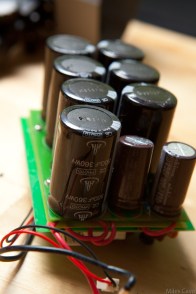Walmart has sought to revolutionize the in-store experience by adding navigation, voice commands, shopping lists, price comparisons, and other useful tools to its mobile applications.
At next week’s MobileBeat — July 8-9 in San Francisco — Walmart’s global head of mobile, Gibu Thomas, will talk about how those efforts have resulted in the company’s growth. He’ll also give people a sense of where Walmart is heading next in mobile and how it might drive top-line growth.
Session Speaker:

Gibu Thomas, SVP of Mobile & Digital, Walmart
While Walmart relies on some external providers for specific functions, it has the scale, vertical integration and talent to build most of its mobile services in-house. The world’s first retailer has been early to adopt mobile technologies. While realizing that mere presence in the App Stores and even basic e-commerce features are now table stakes for the brand, they mostly focus their effort on building the blocks of a new hybrid shopping experience.
That is, Gibu Thomas and his team work on features that support shoppers’ journeys by layering the mobile experience on top of trips to the store, instead of trying to replacing it. Certainly the ability to browse items from the go creates the ability for the ubiquitous stores of the chain to act as fulfillment and pick-up centers for specific errands, but they keep in mind that a lot of the browsing will still happen in-store.
Their strategy is to provide on Walmart’s app the value customer expect from their device, be it the ability to compare prices, jot down notes of things to buy or look for product availability. By carefully listening to their customers needs and iterating on these features, Walmart is building a truly hybrid shopping experience.
Thomas will describe some of the current paradigms of their shopping assistant they hope the app will become, like how the awareness of shopper locations enables the app to switch from an “on-the-go” to an “in-store” mode automatically, surfacing the services users are most likely to need. E-receipts automatically saved also users to easily find past purchases, and will constitute the foundation for more services to come that enhance the experience of everyday shopping.
Note: MobileBeat tickets are nearly gone. Grab yours before they sell out!
Join 1,000 mobile execs, leading brands, analysts, developers, investors, and press for two days packed with high-value discussions, actionable lessons, exclusive announcements, and lots of networking.
We encourage you to secure your spot before the holiday, as tickets are very limited. You can register here.
Special thanks to the following industry leaders for supporting MobileBeat: Factual, Tapjoy, Criteo, AppLovin, Adtile, IBM and AT&T as Gold Partners; Flurry, AppMachine, HasOffers, Sequoia Capital, RadiumOne, SupersonicAds, Cirrus Insight, Tapsense, AppsFlyer and App Annie as Silver Partners; AppDynamics, BlueStacks, Upsight, Cotap, Cail, New Relic, Splunk, GLOBO, Bitcasa, Crittercism, and LifeStreet Media as Event Partners; Adenda, CommandIQ, Raw Engineering, Obelus Media, and Rumble as Nest Partners, and Bizzabo and VSC as Strategic Partners.








 The 12AU7 is popular due to its ruggedness and tolerance for low operational voltages. This amp design uses a plate voltage of 12, although the 12AU7 can handle up to about 330. Since the 12AU7 is of the Twin Triode variety, one tube can be used to amplify both a left and right audio channel.
The 12AU7 is popular due to its ruggedness and tolerance for low operational voltages. This amp design uses a plate voltage of 12, although the 12AU7 can handle up to about 330. Since the 12AU7 is of the Twin Triode variety, one tube can be used to amplify both a left and right audio channel.







